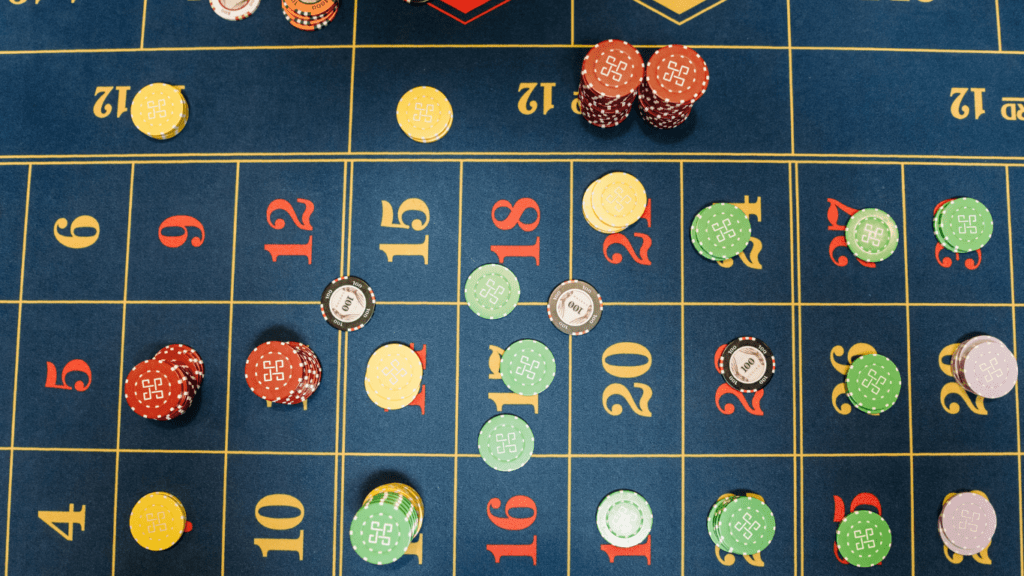The Thrill of Roulette
Roulette offers an exhilarating blend of chance and anticipation. Each spin of the wheel brings the potential for significant wins, creating an atmosphere of excitement that captivates players. I find that the unpredictability inherent in roulette draws many to its spinning wheel, as every moment holds the promise of a surprise outcome.
The game engages players with its simple rules yet complex betting strategies. By understanding the different betting options, like inside and outside bets, players can participate more actively and intelligently. Personally, mastering these strategies enhances the thrill as I place each bet with a calculated purpose.
Roulette’s appeal also lies in its social aspect. Players gather around the table, creating a dynamic and lively environment. Conversations and shared expectations foster a sense of community and camaraderie. For me, this collective experience heightens the thrill of the game.
The anticipation peaks with each spin, as players eagerly watch the ball dance across the numbers. It’s this anticipation, combined with strategic decisions, that creates an unforgettable experience. Each round opens the door to fortune and adds to the thrill that keeps me, and many others, returning to the roulette table.
Understanding Roulette Basics

Roulette combines simple gameplay with strategic betting options. Familiarizing myself with the game’s fundamentals enables me to make informed decisions.
Types of Bets
- In roulette, bets fall into two categories: inside and outside.
- Inside bets include straight-up bets on a single number or split bets covering two numbers, offering higher payouts but lower odds.
- Outside bets, such as red or black, even or odd, and dozens, provide better odds but smaller payouts.
- Understanding these options enhances my ability to strategize effectively.
House Edge and Payouts
- Each type of bet carries a specific house edge, impacting potential returns.
- European roulette, with a single zero, offers a house edge of approximately 2.7%, while American roulette, with an extra double zero, increases it to about 5.26%.
- Payouts correspond to bet odds—inside bets pay higher due to their riskier nature.
- Knowing this helps me optimize my betting strategy to reduce the advantage the house maintains.
Common Betting Patterns in Roulette
Exploring common betting patterns in roulette aids players in making informed decisions. Recognized systems often help guide strategic bets and manage potential losses.
The Martingale System
The Martingale System involves doubling the bet after a loss. This continues until a win occurs, recouping previous losses and securing a profit. It’s ideal for even-money bets like Red/Black. While popular, I find it crucial to ensure sufficient bankroll and table limits account for potential losing streaks, as losses can escalate quickly.
The Labouchere System
The Labouchere System uses a sequence of numbers to determine bet amounts. Begin by writing a sequence, typically 1-2-3, and bet the sum of the first and last numbers. If the bet wins, remove those numbers; if it loses, add the bet amount to the sequence’s end. This system offers flexibility in setting a loss limit but requires discipline to prevent long sequences that lead to large bets.
The Fibonacci Sequence
The Fibonacci Sequence, based on the mathematical series, adjusts bets according to the sequence: 1, 1, 2, 3, 5, 8, etc. After a loss, move one step forward in the sequence; after a win, move two steps back. It’s suitable for even-money bets and provides a slower progression than the Martingale, minimizing quick bankroll depletion. This method demonstrates controlled betting through the use of a structured numerical system.



 Community Engagement Manager
Raymundo Stricklandics serves as the Community Engagement Manager for Dice Gamblers Deal, where he is dedicated to creating meaningful connections with the platform’s audience. His role focuses on fostering an active, engaged community of players by interacting with readers, answering their questions, and ensuring their experience with the site is both enjoyable and informative. Raymundo is deeply passionate about building relationships with fellow gambling enthusiasts, whether through social media, email communications, or direct interaction on the site’s forums. He works tirelessly to ensure that the platform not only provides valuable information but also offers a supportive space where players can share their experiences, tips, and success stories. Raymundo also plays a key role in customer support, addressing user inquiries and providing personalized advice to help players navigate the world of table games and betting strategies.
Community Engagement Manager
Raymundo Stricklandics serves as the Community Engagement Manager for Dice Gamblers Deal, where he is dedicated to creating meaningful connections with the platform’s audience. His role focuses on fostering an active, engaged community of players by interacting with readers, answering their questions, and ensuring their experience with the site is both enjoyable and informative. Raymundo is deeply passionate about building relationships with fellow gambling enthusiasts, whether through social media, email communications, or direct interaction on the site’s forums. He works tirelessly to ensure that the platform not only provides valuable information but also offers a supportive space where players can share their experiences, tips, and success stories. Raymundo also plays a key role in customer support, addressing user inquiries and providing personalized advice to help players navigate the world of table games and betting strategies.
